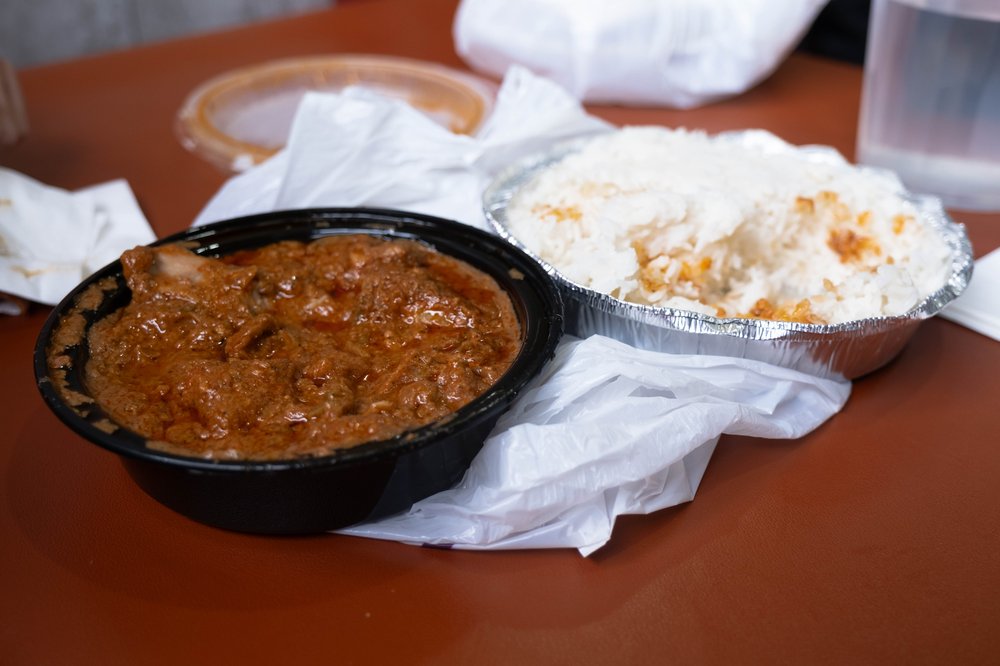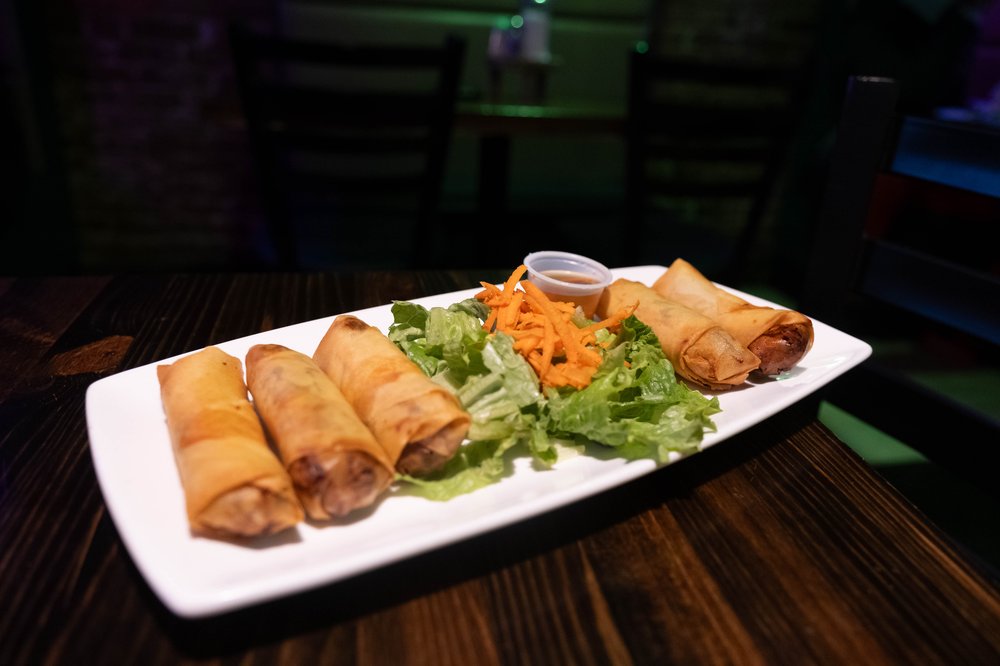Comforting stews and bright flavors: A guide to Harlem’s Senegalese food
Dec. 24, 2023, 9 a.m.
Chef Farideh Sadeghin explores the restaurants and shops in Little Senegal.

Farideh Sadeghin is a chef and video host based in Brooklyn. In this series, she explores New York City neighborhoods through their food and histories.
Le Petit Senegal in Central Harlem has been home to people from Senegal and other West African countries for decades and people told me it has some of the best Senegalese food in the city.
All along 116th Street, you’ll hear Wolof – Senegal's main language – and French. Senegal was a French colony until 1960, and France’s influence is seen in Senegalese cuisine, creating unique dishes worth seeking out.
The food of Senegal is layered and familiar, with comforting stews, bright flavors, fresh and smoked seafood, charred meats, and grains.
Before I headed to the neighborhood, I read chef Pierre Thiam’s book, “Senegal: Modern Senegalese Recipes from the Source to the Bowl.” According to Thiam, red palm oil (pressed from palm fruit) is essential in Senegalese cooking and is used to add a rich intensity to dishes.
Little Senegal is primarily located around West 116th Street between Frederick Douglass Boulevard and Lenox Avenue.
I headed to the neighborhood on a crisp December day, bundled up and ready to explore as the snow slowly fell but didn't stick to the ground.

My first stop was Malcolm Shabazz Harlem Market, located on 116th Street between Fifth and Lenox avenues. As I wandered the open air market, I stopped and chatted with people while checking out the variety of textiles and traditional crafts from Senegal and other West African countries, such as Mali and Gambia. I asked two brothers about their favorite spot for Senegalese food, and they pointed me down the road to Le Baobab Gouygui, a small, bustling restaurant located across Lenox Avenue on 116th Street.
At the counter, I ordered lamb mafé, a thick stew made from groundnuts or peanuts, and bissap juice, which is made from hibiscus flower.
The mafé was spicy and warm, with tender lamb chunks and huge carrot pieces served alongside steamed rice. The bissap was dark red-pink and came half frozen in a plastic container, reminiscent of the nutcrackers (the drinks, not the holiday figurines) you might find at Rockaway Beach in the summertime.
From there, I walked another block down 116th Street, past the Senegalese Association of America and over to La Savane, a small restaurant opened by two taxi drivers, one from Côte d’Ivoire and the other from Guinea, featuring a variety of dishes from West Africa.
I ordered the fataya, a popular Senegalese street food similar to an empanada or hand pie, which is typically made with meat or fish and then fried. The dish arrived in Senegal by way of Lebanon, another French colony. La Savane's fataya was flaky, savory and filled with meat, and came with a side of slightly sweet, chili-spiced sauce.
Just a couple of doors down from La Savane is Pikine – another spot recommended by numerous people I spoke with, including Thiam, who owns Teranga, a popular restaurant with locations in Harlem and Midtown.
I ordered thiéboudienne (pronounced chee-boo-jen), which is widely considered Senegal's national dish. It’s a jollof rice dish served with flaky white fish and whole vegetables, such as potatoes, cassava and pumpkin.
The dish, which is named for the Wolof words for rice (thiéb) and fish (jën), is a one-pot meal garnished with xoñe, the crunchy grains of rice that stick to the bottom of the pot. (I was very excited to see these grains on my plate when my food arrived; in Iranian cuisine, we call them “tahdig,” which means "bottom of the pot" in Farsi.) The rice was fluffy and the entire dish was savory and delicately spiced.
Along this stretch of 116th Street, you’ll come across numerous markets like Adja Khady, which carries a variety of West African products, such as frozen ngai ngai (roselle leaves, similar to hibiscus), peanuts (one of Senegal’s primary crops, first brought to West Africa from South America), spices, smoked and frozen fish, and fufu flour (a pounded meal typically made from cassava, yams or plantains), as well as red palm oil.

After walking up Frederick Douglass Boulevard for several blocks, I arrived at Des Ambassades, which is both a sit-down restaurant and bakery. I slid into a booth and ordered the chicken yassa, a bright and flavorful braised chicken dish served with onions, Dijon mustard, lemon and a mound of steamed rice. The sauce was tangy and the chicken tender.
My server Maryem Abbullahi is Nigerian but told me that everyone in the community frequents the Senegalese-owned spot. The restaurant's menu isn't just limited to classic Senegalese dishes; it also includes local favorites, like hamburgers and soul food. Abbullahi told me that people come specifically for their baguette with the seasoned special mayo, which she brought for me to try, although what is in the mayo is a secret.
From Des Ambassades, I walked up Frederick Douglass and turned down 132nd Street. A block down on Adam Clayton Powell Jr. Boulevard is Chez Maty et Sokha.
A poster inside Chez Maty says the restaurant owner, Amadou Thiam, named the restaurant after his mother, Maty Mangassa. As a child, Amadou Thiam used to go with her to the market while she sold bissap and ginger juice. At home, he’d watch her cook and prepare food, which inspired him to open his own business in New York City.
I ordered the dibi lamb, a dish of marinated and grilled lamb and onions with a mustard sauce and served with bread. It was tangy and tender, and a great snack for my ever-filling stomach.

I walked a block north to Africa Kine, which is named for its owner Fatou Kine Mar. The restaurant was originally located on 116th Street, but was forced to move locations after rent prices increased in 2015. Numerous traditional Senegalese dishes grace its menu, but here I particularly wanted to try the nems: small Vietnamese beef and vegetable spring rolls.
Slate reports that the snack arrived in Senegal after France sent soldiers from its West African colonies to Southeast Asia during the Indochina War.
The nems were hot and crisp; I washed them down with a Vimto, a British soda popular among the Muslim community (about 95% of people in Senegal are Muslim, according to the Berkley Center at Georgetown University). Vimto is also a popular choice to break fast during Ramadan: it's a bubbly combination of raspberries, blackcurrant and grapes.
I sat back in my booth at Africa Kine, feeling cozy from the warm heat blasting and full from all the food I’d consumed, which had me dangerously close to falling asleep.
I paid my bill and made my way back into the cold outside to catch the subway back to Brooklyn.
Although I’d seen and tasted a lot, there were several other Senegalese and West African restaurants in the area that I didn’t have a chance to stop at, such as Teranga, Chez Jacob, and Accra. But that just means I’ll have to come back.
- heading
- Try it for yourself
- image
- image
- None
- caption
- body
All of the restaurants mentioned in this article are in this Google Map, which you can save to your phone.